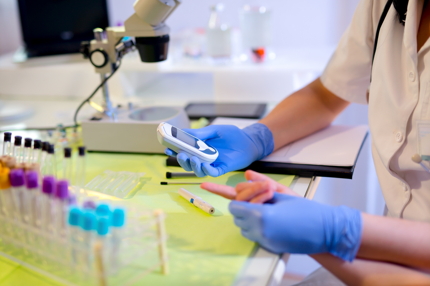Introduction to Diabetes Syndromes



This session introduces the different classifications of diabetes in children and explains the molecular mechanisms and pathophysiology of various diabetes syndromes.
Learning Objectives
By the end of this session you will be able to:
- Describe the mechanism behind the release of insulin from beta cells in the pancreas
- Outline the various types of maturity onset diabetes of youth
- Explain the causes and management of neonatal diabetes
This session introduces the different classifications of diabetes in children and explains the biological mechanisms behind the release of insulin from beta cells in the pancreas.
Dr. Dhaara Iyer trained in paediatrics in India. She came to UK for further training and experience in paediatrics. Dhaara has a special interest in paediatric endocrinology and diabetes.
Through her training as a paediatric registrar, she has worked in paediatric endocrinology and diabetes at Sandwell and West Birmingham NHS trust, University Hospital Coventry and Warwickshire, Birmingham Children’s Hospital and University Hospital of North Midlands.
Currently, Dhaara is a senior clinical fellow in paediatric endocrinology and diabetes at Birmingham Children’s Hospital.


Dr Chizo Agwu. MBBS, MRCP, PCME, MSc, FRCPCH is also an Honorary Senior Clinical Lecturer/Deputy Admissions Tutor at University of Birmingham and RCPCH Principal Regional Examiner for West Midlands.
Other International/National Roles related to diabetes include:
- Member Executive Advisory council of ISPAD (International Society for Paediatric and Adolescent Diabetes)
- Paediatric Section Editor: Diabetes Digest Journal
- Member NICE Guideline Development Group: Diabetes Foot 2013 to March 2015
- Immediate Past National Chairman, Association of Children’s Diabetes Clinicians UK

- Anaesthesia Fundamentals | Physiology | Ventilatio...
- Posted By eIntegrity Healthcare e-Learning
- Posted Date: 2024-12-26
- Location:Online
- This session describes how and why ventilation and perfusion vary in the healthy lung. Causes of hypoxia, such as hypoventilation, increased dead space and shunt, are discussed to help the trainee explain and manage hypoxia clinically.
- Anaesthesia Fundamentals | Physiology | Pulmonary ...
- Posted By eIntegrity Healthcare e-Learning
- Posted Date: 2024-12-26
- Location:Online
- This session covers the measurement and clinical importance of lung volumes, including functional residual capacity and dead space. Information regarding the performance and interpretation of flow-volume loops is also included.
- Anaesthesia Fundamentals | Physiology | Co2 Carria...
- Posted By eIntegrity Healthcare e-Learning
- Posted Date: 2024-12-26
- Location:Online
- This session covers the physiology of how carbon dioxide is carried by blood, including its conversion into bicarbonate ions and the role of the red blood cell and haemoglobin in this process. The session also describes how buffers work, and the fundament
- Anaesthesia Fundamentals | Physiology | Function o...
- Posted By eIntegrity Healthcare e-Learning
- Posted Date: 2024-12-26
- Location:Online
- This session focusses on the function of haemoglobin in oxygen (O2) carriage from the lungs to other tissues where cells are supplied with the O2 required for oxidative phosphorylation in the mitochondria. We will cover the structure
- Anaesthesia Fundamentals | Physiology | Gaseous Ex...
- Posted By eIntegrity Healthcare e-Learning
- Posted Date: 2024-12-26
- Location:Online
- This session will introduce you to the physiological effects of altitude and the adaptations that occur with acclimatization. It also introduces the pathology and physiology of high pressure and decompression.







